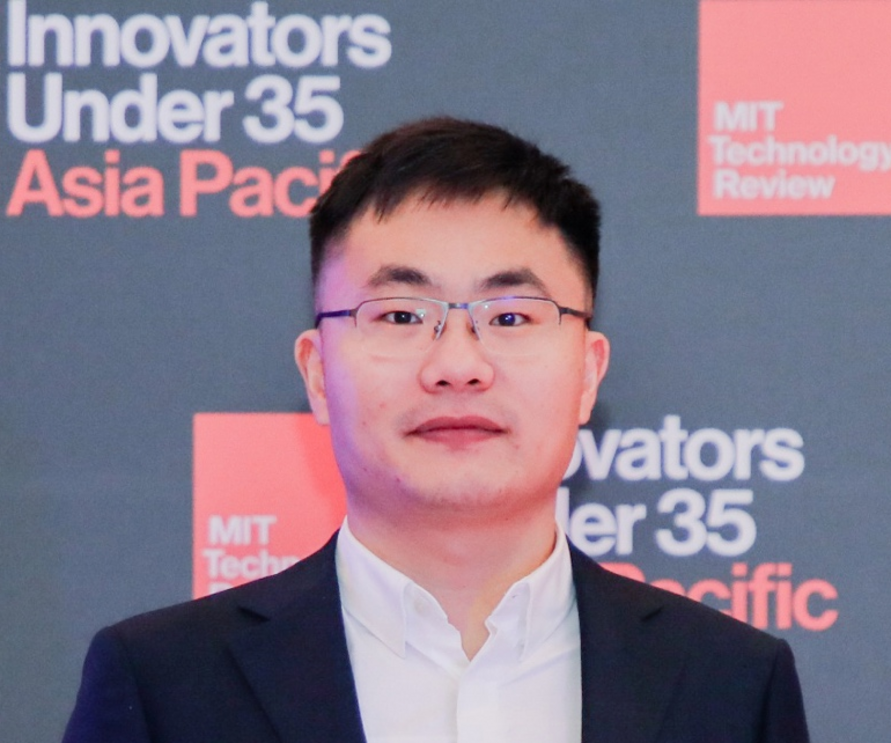It is exciting as the road ahead is unknown. Join us to explore the amazing protein design world. I cannot guarantee you success or greatness. Only the promise that you will never be alone on the way to “Leavenworth”. I will always be with you to face all the struggles and failures. Let’s enjoy the journey.
Biography
Dr. Longxing received his bachelor’s degree in Biological Science in 2012 from Shandong University, then he continued his scientific research as a graduate student tutored by Prof. Yongning He, in Shanghai Institute of Biochemistry and Cell biology. The structure-function relationship of proteins and their incredible potential to improve medicine drew him to David Baker’s lab for postdoctoral training. He has developed new protein designing methods and apply these methods to design de novo protein binders that could block virus infection, control cell signaling pathways and kill cancer cells. He joined the SLS in 2021-08 as an assistant professor and continue working on protein design.
Research
Dr. Longxing Cao has been working on developing new protein design methods and designing super-stable miniproteins, which could be modified to bind specific native proteins to block or modulate their native functions. He is also working on developing new protein docking and protein interface design methods such that the miniproteins can be functionalized to bind to specific protein targets with high affinity and specificity. By applying these new methods, He has successfully designed binders targeting a variety of native protein targets, including influenza haemagglutinin (HA), IL7R, TrkA, CD3, EGFR, PDGFR, Insulin Receptor, FGFR, VirB8-like protein, Tie2, CD98hc et al. There are several advantages of these de novo binders comparing to the usual antibodies-based therapies and diagnostic tools, such as high stable, low-cost of expression and highly controllable modifications. These de novo mini-protein binders have a great potential to be used as the next generation therapeutic drugs and diagnostic tools. During the COVID-19 pandemic, he successfully used the newly developed methods to design miniprotein inhibitors, that bind tightly to the SARS-CoV-2 Spike protein and prevent it from infecting cells. The best lead candidate, LCB1, which showed promising results in animal studies, appears to rival the most effective known SARS-CoV-2 neutralizing antibodies in protecting against the virus.
Our lab’s research interests focus on developing new de novo protein design methods and apply these methods for cutting-edge therapeutics. We are particularly interested in the following directions:
1. Designing de novo protein therapeutics by targeting tumor specific cells surface marks and immune modulators.
2. Designing conformational switches that can sense environment stimulus (ion, light, small molecules, et al.), and explore its applications in synthetic biology and immunotherapy.
3. Developing function-oriented approach for de novo protein scaffold generation and sequence design.
4. Developing new protein structure generation and sequence design methods utilizing the advanced deep learning techniques
Representative Publications
1. Cao, L.*, Coventry, B.*, Goreshnik, I., Huang, B., Sheffler, W., Park, J. S., ... & Baker, D. (2022). Design of protein-binding proteins from the target structure alone. Nature, 605(7910), 551-560.
2. Cao, L., Goreshnik, I., Coventry, B., Case, J. B., Miller, L., Kozodoy, L., ... & Baker, D. (2020). De novo design of picomolar SARS-CoV-2 miniprotein inhibitors. Science, 370(6515), 426-431.
3. Cao, L.*, Yu, B.*, Kong, D.*, Cong, Q., Yu, T., Chen, Z., ... & He, Y. (2019). Functional expression and characterization of the envelope glycoprotein E1E2 heterodimer of hepatitis C virus. PLoS pathogens, 15(5), e1007759.
4. Hunt, A. C.*, Case, J. B.*, Park, Y. J.*, Cao, L.*, Wu, K.*, Walls, A. C.*, ... & Baker, D. (2022). Multivalent designed proteins protect against SARS-CoV-2 variants of concern. Science Translational Medicine, 0(0), 0-eabn1252
5. Dong, Y.*, Cao, L.*, Tang, H., Shi, X., & He, Y. (2017). Structure of Human M-type Phospholipase A2 Receptor Revealed by Cryo-Electron Microscopy. JMB, 429(24), 3825-3835.
6. Cao, L., Chang, H., Shi, X., Peng, C., & He, Y. (2016). Keratin mediates the recognition of apoptotic and necrotic cells through dendritic cell receptor DEC205/CD205. PNAS, 113(47), 13438-13443.
7. Cao, L., Shi, X., Chang, H., Zhang, Q., & He, Y. (2015). pH-dependent recognition of apoptotic and necrotic cells by the human dendritic cell receptor DEC205. PNAS, 112(23), 7237-7242.
8. Case, J. B., Chen, R. E., Cao, L., Ying, B., Winkler, E. S., Johnson, M., ... & Diamond, M. S. (2021). Ultrapotent miniproteins targeting the SARS-CoV-2 receptor-binding domain protect against infection and disease. Cell Host & Microbe, 29(7), 1151-1161.
9. Cecon, E., Burridge, M., Cao, L., Carter, L., Ravichandran, R., Dam, J., & Jockers, R. (2021). SARS-COV-2 spike binding to ACE2 in living cells monitored by TR-FRET. Cell Chemical Biology.
10. Quijano-Rubio, A., Yeh, H. W., Park, J., Lee, H., Langan, R. A., Boyken, S. E., Lajoie, M.J., Cao, L., ... & Baker, D. (2021). De novo design of modular and tunable protein biosensors. Nature, 591(7850), 482-487.
11. Cheng, C., Hu, Z., Cao, L., Peng, C., & He, Y. (2019). The scavenger receptor SCARA1 (CD204) recognizes dead cells through spectrin. Journal of Biological Chemistry, 294(49), 18881-18897.
12. Yu, B., Kong, D., Cheng, C., Xiang, D., Cao, L., Liu, Y., & He, Y. (2021, October). Assembly and recognition of keratins: A structural perspective. Seminars in cell & developmental biology. Academic Press.
13. Chang, H., Cao, L., & He, Y. (2018). Electron Microscopic Analysis of the Plasma Membrane and Cell Surface Molecules. Membrane Biophysics (pp. 221-250). Springer, Singapore.
14. Zhong C., Shen J., Zhang, H., Li, G., Shen, S., Wang, F., Hu, K., Cao, L., He, Y., & Ding, J. (2017). Cbln1 and Cbln4 Are Structurally Similar but Differ in GluD2 Binding Interactions. Cell reports, 20(10), 2328-2340.
(* equal contribution)
Contact Us
caolongxing@westlake.edu.cn
